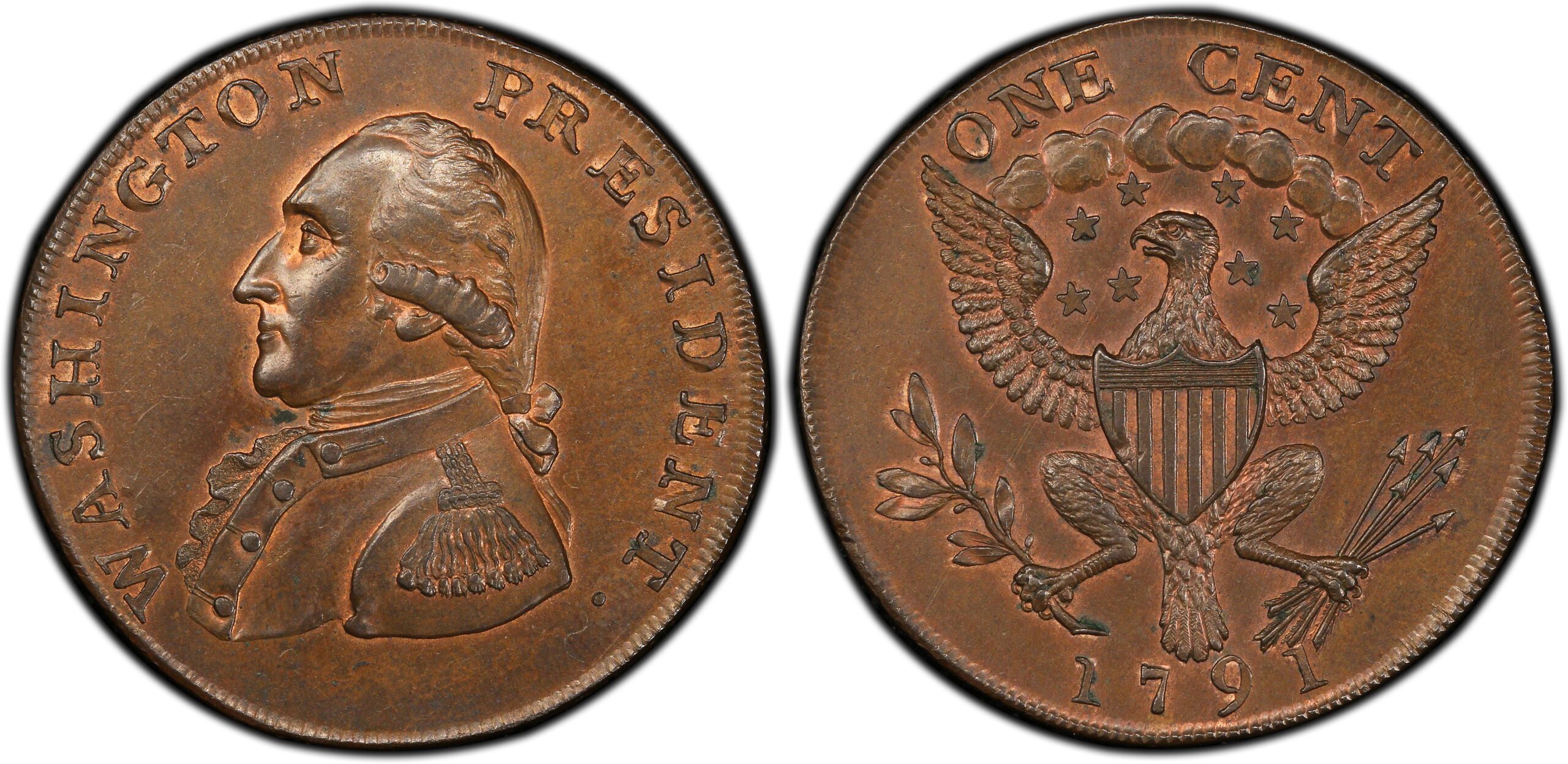The one cent coin, commonly known as the penny, is an enduring symbol of American history and culture. From its inception in 1793 to its current form, the penny has undergone numerous transformations in design and composition, reflecting the changing times and values of the United States.
Historical Origins
The United States Mint began producing the one cent coin in 1793, just a few years after the nation’s founding. The first penny, known as the “Flowing Hair Cent,” featured a depiction of Lady Liberty with flowing hair on the obverse and a chain of 15 links on the reverse, representing the original 13 colonies plus Vermont and Kentucky. This design was soon replaced due to public criticism of the chain, which some interpreted as a symbol of slavery.
Subsequent early designs included the “Liberty Cap Cent” and the “Draped Bust Cent,” each offering a different artistic interpretation of Lady Liberty. These early pennies were larger and made of nearly pure copper, unlike today’s smaller, predominantly zinc composition.
The Indian Head and Lincoln Cents
The Indian Head cent, introduced in 1859, marked a significant shift in the penny’s design. Created by James B. Longacre, this coin featured Lady Liberty wearing a Native American headdress. It remained in circulation until 1909 and became a favorite among collectors for its unique and culturally significant imagery.
In 1909, to commemorate the 100th anniversary of Abraham Lincoln’s birth, the Lincoln cent was introduced. Designed by Victor David Brenner, the coin’s obverse featured a profile of the 16th president, making it the first U.S. coin to depict a real historical figure. The reverse initially displayed two wheat ears, symbolizing agricultural prosperity, leading to its nickname, the “Wheat Penny.” This design remained in use until 1959 when it was replaced by the Lincoln Memorial design to celebrate Lincoln’s 150th birthday.
Modern Pennies
The Lincoln Memorial cent, designed by Frank Gasparro, was minted from 1959 to 2008. It depicted the Lincoln Memorial on the reverse, highlighting one of America’s most iconic landmarks. In 2009, to celebrate Lincoln’s bicentennial, the U.S. Mint issued four different reverse designs, each representing a different aspect of Lincoln’s life: his birth and early childhood, his formative years, his professional life, and his presidency.
Since 2010, the penny’s reverse has featured a shield design, symbolizing Lincoln’s preservation of the United States as a single country.
Composition and Controversy
Originally made from pure copper, the penny’s composition has changed over the years due to economic factors. From 1857, the coin’s composition shifted to a copper-nickel alloy, and in 1982, the Mint transitioned to a primarily zinc core with a thin copper coating, significantly reducing production costs.
The penny has been a subject of controversy in recent years, with debates over its continued production. Critics argue that the cost of producing a penny exceeds its face value and that it is largely unnecessary in modern commerce. Proponents, however, point to its historical significance and its role in everyday transactions.
Collecting Pennies
The one cent coin is a favorite among collectors due to its long history and the variety of designs and compositions. Key dates and rare varieties, such as the 1909-S VDB and the 1955 doubled die penny, are particularly prized. Collecting pennies can be an accessible entry point into the hobby of numismatics, offering both historical education and the thrill of discovery.
Conclusion
The one cent coin is more than just a unit of currency; it is a reflection of American history, culture, and values. From its early days as a large copper coin to its modern zinc composition, the penny has evolved alongside the nation. Despite debates over its future, the penny remains a cherished piece of American heritage, symbolizing the enduring spirit of the United States.
